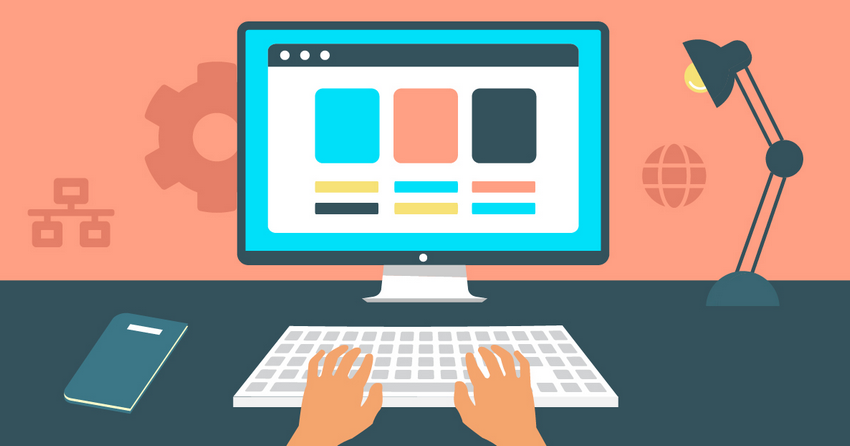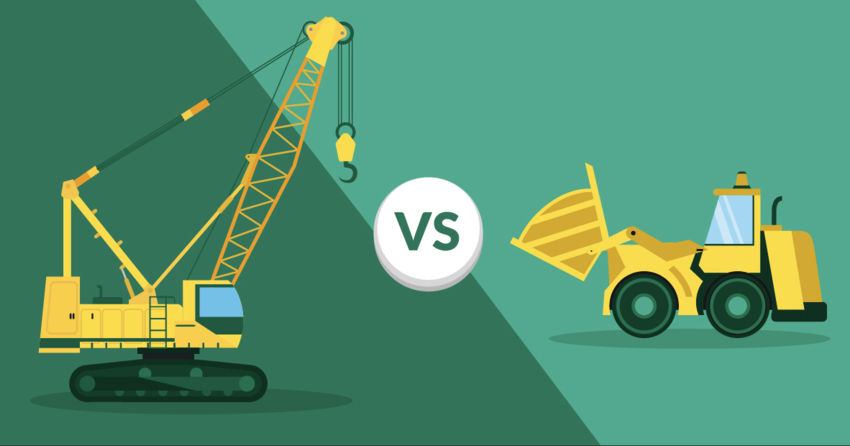Building a Shopify store is simple, but creating one that actually stands out, keeps customers browsing, and convinces them to buy is another challenge entirely. Your customers expect a smooth shopping experience – if they don’t get it, they’ll leave.
To help you avoid that, I’ve rounded up 12 of the best Shopify store examples. Each one shows off smart design choices – like guided quizzes, bold lifestyle imagery, and intuitive product pages, that you can borrow for your own site. I also included practical design tips you can apply to your own store.
If you’re ready to start building, Shopify makes it easy to launch a polished, sales-ready store in just a few clicks. Simply choose your favorite website theme, upload your products, add your brand’s images and text, and your store is ready to start selling!
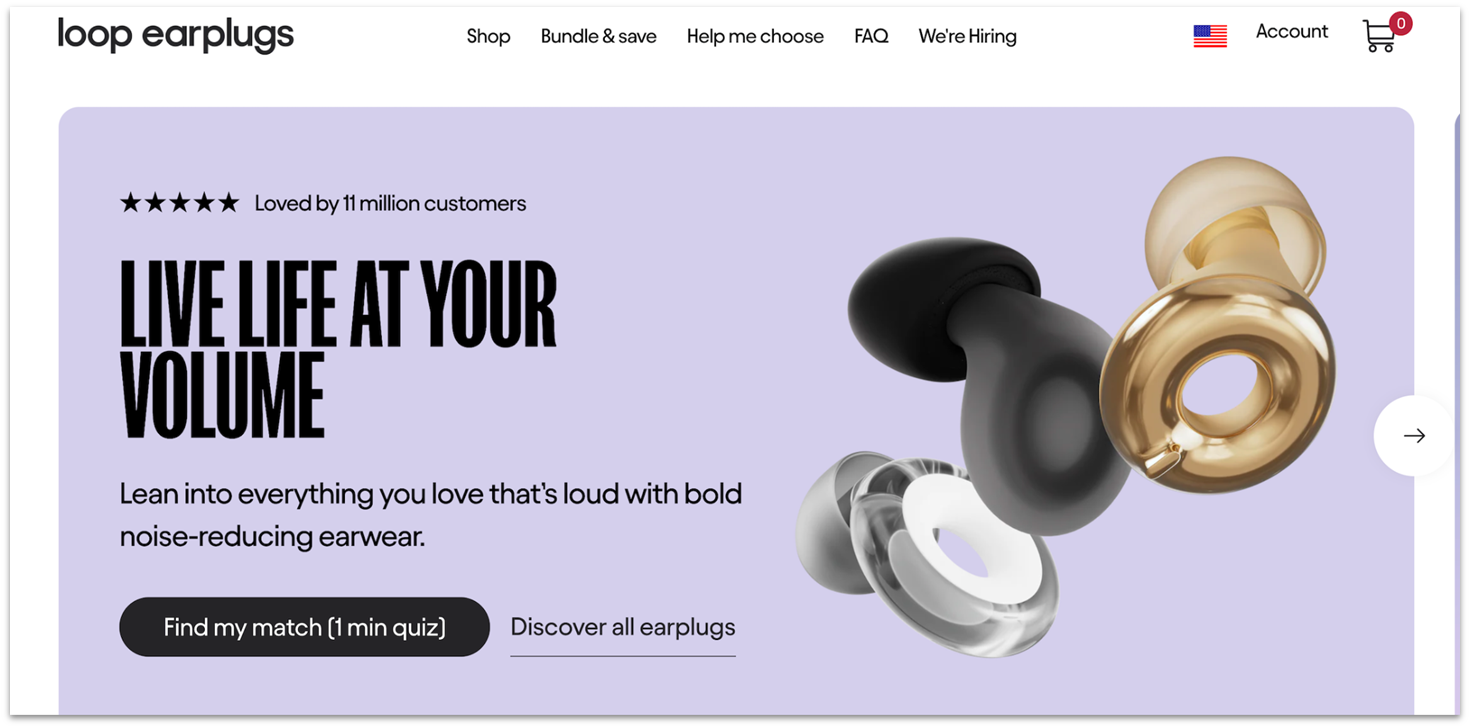
Visit the website at: https://us.loopearplugs.com/
Loop Earplugs leverages Shopify’s integrations to embed an image slideshow that showcases its products. The navigation is simple and intuitive, with the Shop page neatly dividing products into categories like Noise Sensitivity, Sleep, and Focus. This level of organization reduces friction and makes it easier for visitors to find what they need quickly.
The site streamlines decision-making for shoppers. Its “Help Me Choose” quiz recommends the right earplug based on individual preferences, and the product pages include features that let shoppers virtually experience the benefits of each option. Adding guided selling tools and clear product categorization can turn a crowded catalog into an easy, customer-focused journey.
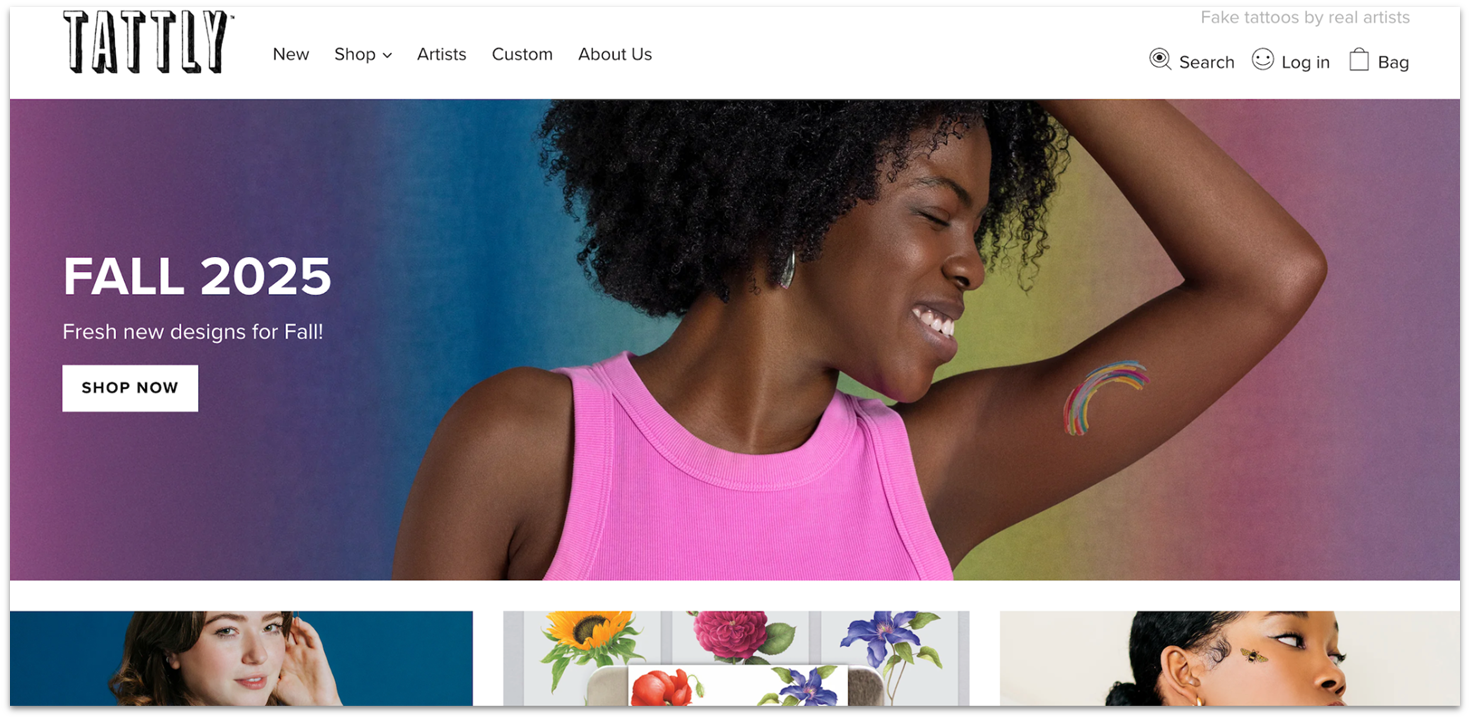
Visit the website at: https://tattly.com/
Tattly’s Shopify store is bright and appealing, with lifestyle photography that immediately shows how the brand’s temporary tattoos look when worn. Tattly neatly organizes product categories into a grid, making it easy to browse without distraction. Clear calls-to-action guide visitors toward shopping by theme or design, so they never feel lost in the catalog.
A timed popup invites shoppers to join Tattly’s newsletter with a 20% discount, encouraging them to take the next step without being intrusive. The site balances fun branding with straightforward navigation, which is a design principle you can apply to your own store. Use bold imagery to show products in action, but keep the layout simple so the path to purchase remains clear.
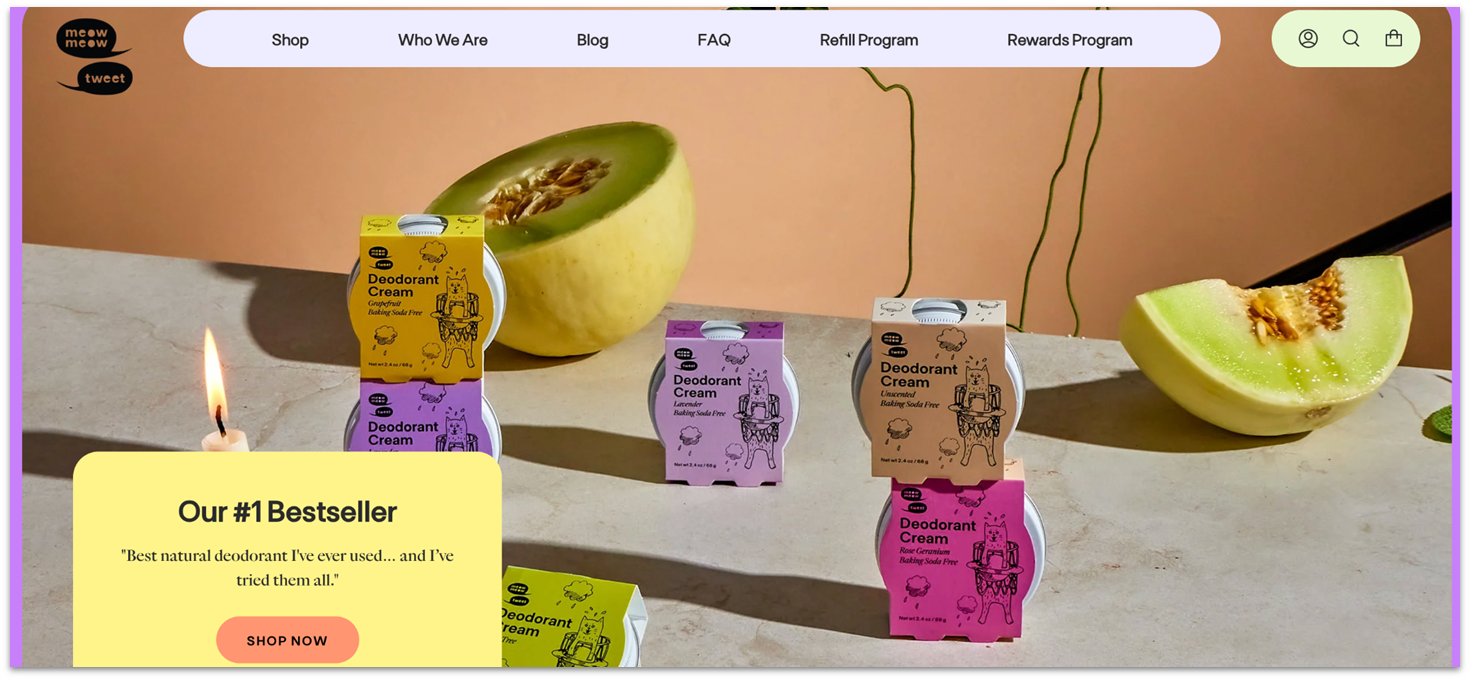
Visit the website at: https://meowmeowtweet.com/
Meow Meow Tweet uses Shopify’s Broadcast theme to create a playful and vibrant design that mirrors the brand’s natural skincare products. A dedicated best sellers section highlights popular items, while a members-only sign-in adds exclusivity for returning customers.
The brand also leans heavily on storytelling, with a “Who We Are” page that outlines its commitment to ethical and sustainable practices. This gives visitors a sense of the values behind the products, building trust and connection. A dedicated rewards page encourages sign-ups by offering discounts and perks, which is a smart way to foster loyalty.

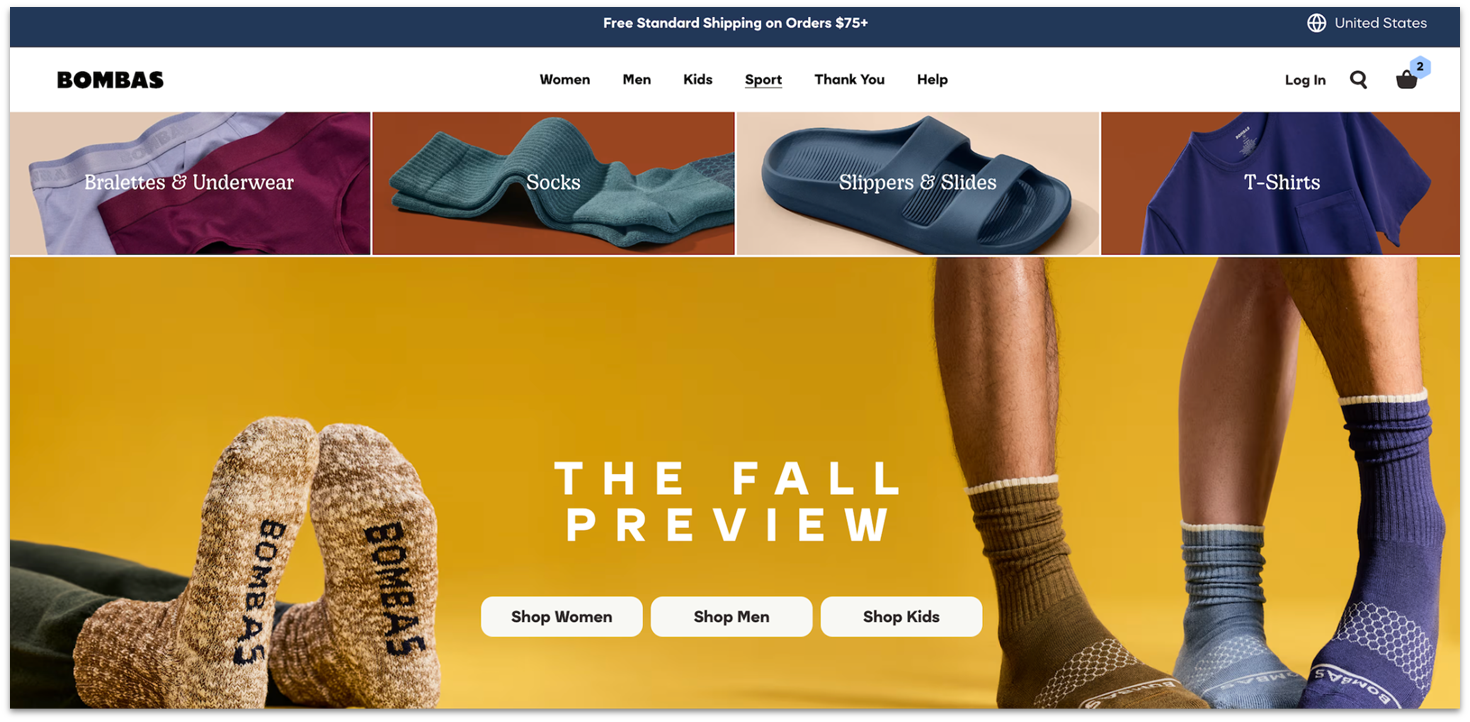
Visit the website at: https://bombas.com/
Bombas puts its product in action front-and-center so visitors instantly see how it looks and feels in everyday use. Above the fold, shoppers can easily spot links to other categories like shirts and slippers, making it simple to explore beyond the brand’s flagship product. The site uses clear navigation options for Women, Men, and Kids to create a smooth shopping experience.
The product pages on Bombas feature different angles, color options, and size selectors that reduce hesitation when buying, courtesy of Shopify’s product categorization tools. The site also uses smart conversion tactics that you can apply to your own store such as a free shipping top banner and a sticky discount button.
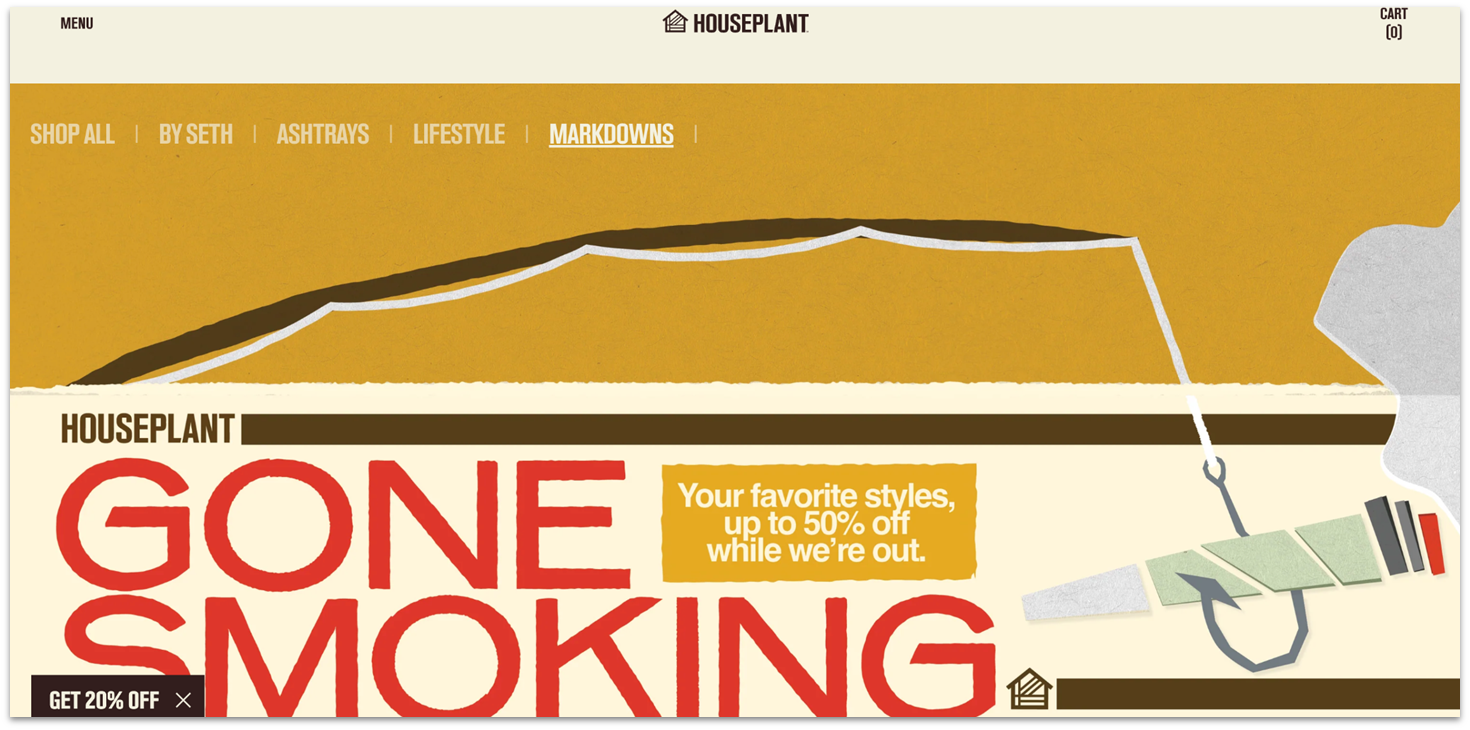
Visit the website at: https://www.houseplant.com/
Houseplant demonstrates how to blend strong branding with subtle celebrity influence. Instead of putting Seth Rogen front and center, the site uses his name and creative input to build credibility without overshadowing the products.
The “By Seth” page highlights items Rogen personally designed and leverages Shopify’s Vimeo integration to include a video that walks you through his design process. Also, the website’s newsletter pop-up includes Rogen’s image, creating a visual hook for email sign-ups. You can take inspiration from how Houseplant balances celebrity influence, rich media, and user feedback to create an engaging, trustworthy shopping experience.
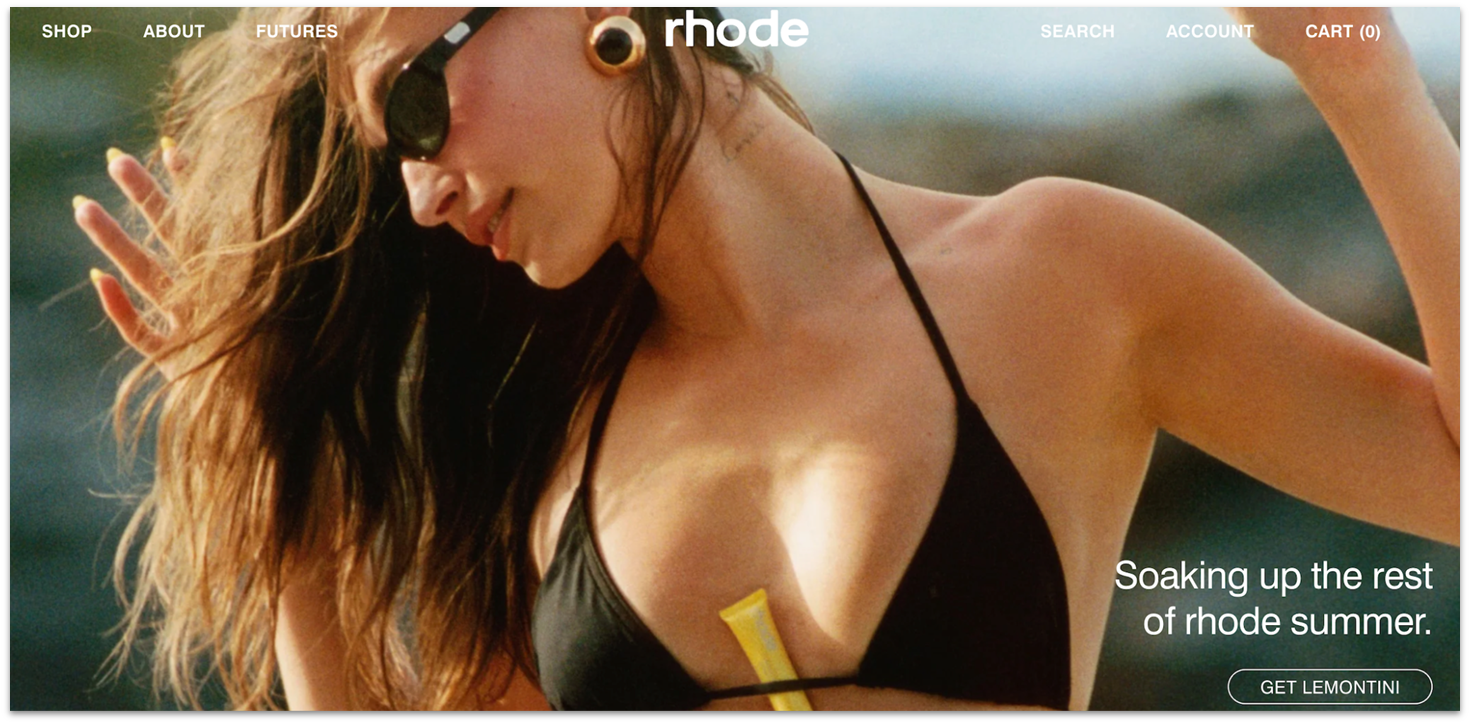
Visit the website at: https://www.rhodeskin.com/
Rhode skin leans heavily on close-up lifestyle imagery of Hailey Bieber, instantly tying the brand to a recognizable face and creating trust. Large, polished product photography dominates the homepage, allowing the visuals to sell the lifestyle as much as the products. Subtle hover effects keep the experience dynamic without overwhelming shoppers.
Rhode leverages Shopify’s social media integration to embed Instagram feeds, extending the brand story beyond the store. This not only keeps the site fresh but also shows how customers engage with the products. When you’re building your own store, consider how Rhode combines influencer storytelling, curated imagery, and social content to create a cohesive, high-end shopping experience.
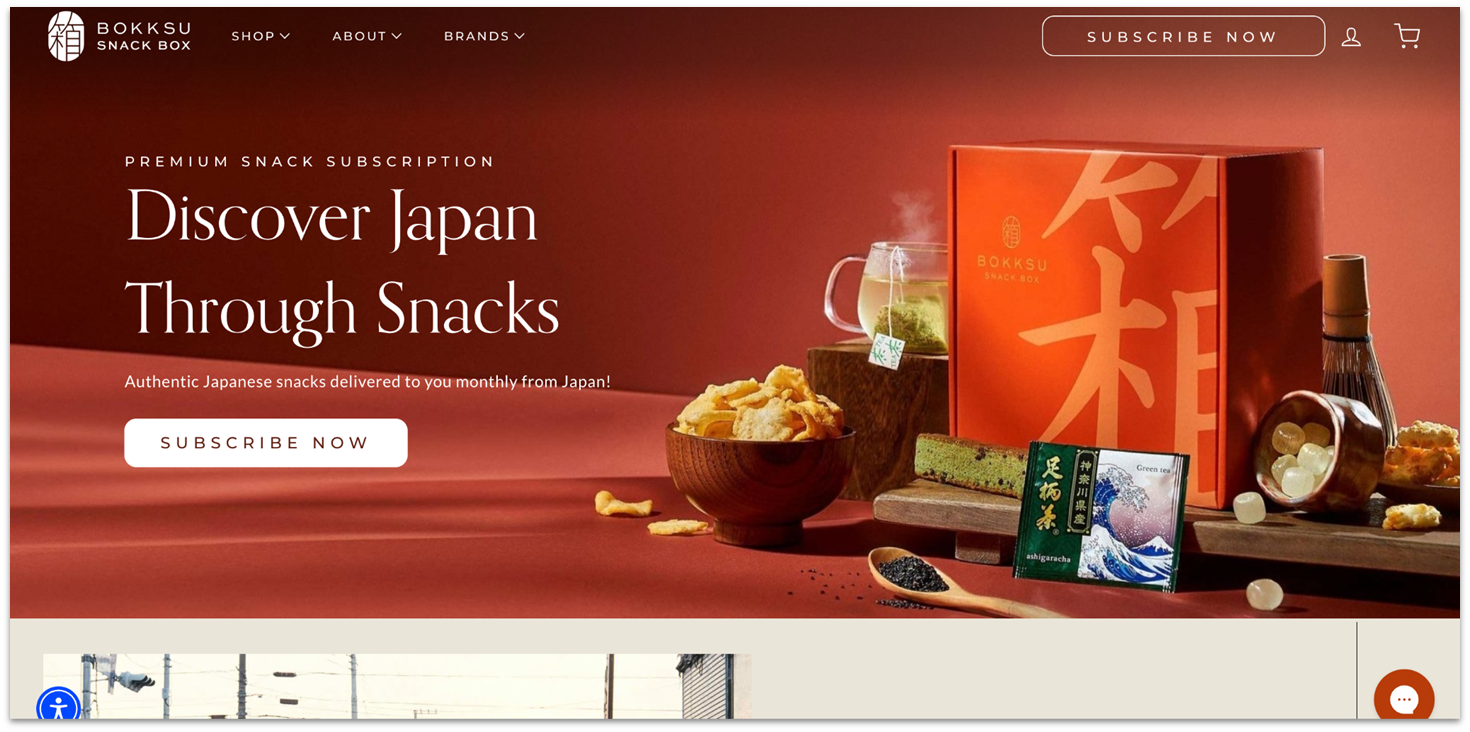
Visit the website at: https://www.bokksu.com/
Bokksu’s website makes it easy for visitors to take action with clear CTA buttons that guide them toward subscribing to its snack box service. Its homepage builds trust through credibility elements like a “Featured by” section, detailed product reviews, and User-Generated Content (UGC) images.
Bokksu also uses the Shopify Oct8ne app integration to give customer support to shoppers. Another smart design choice is how Bokksu separates its product lines into dedicated websites for snacks, gourmet, and groceries. Instead of overwhelming visitors with everything in one place, it creates focus and clarity.
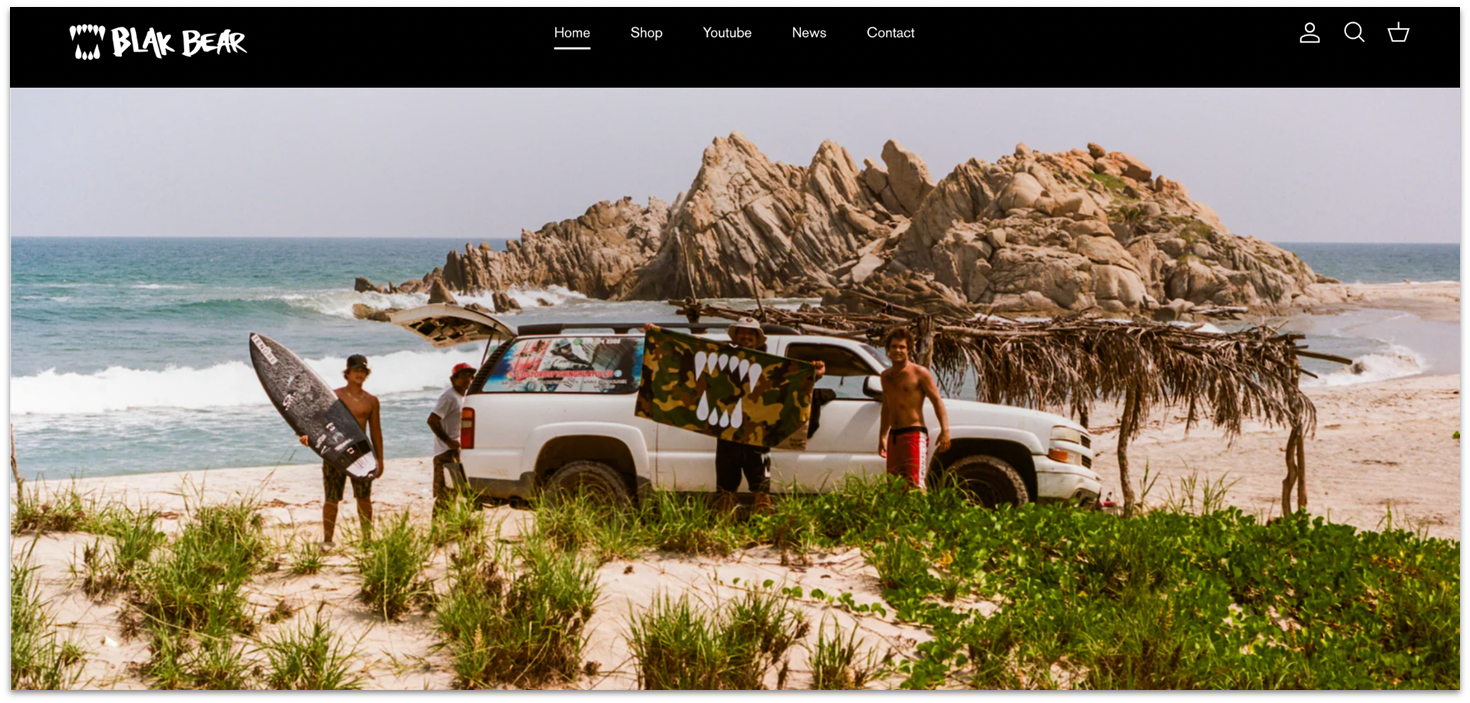
Visit the website at: https://blakbearsurfclub.com/
Blak Bear uses a full-width hero image of surfers to instantly connect the products with the lifestyle they represent. Pairing your product with lifestyle imagery can help you build an emotional connection with your audience.
The store also adds a navigation link that directs visitors to the brand’s YouTube channel, which expands engagement beyond the website. Meanwhile, the News page uses Shopify’s blogging tools to share interviews, research, and surf culture topics – content that supports Blak Bear’s brand story and positions it as an authority in its niche.
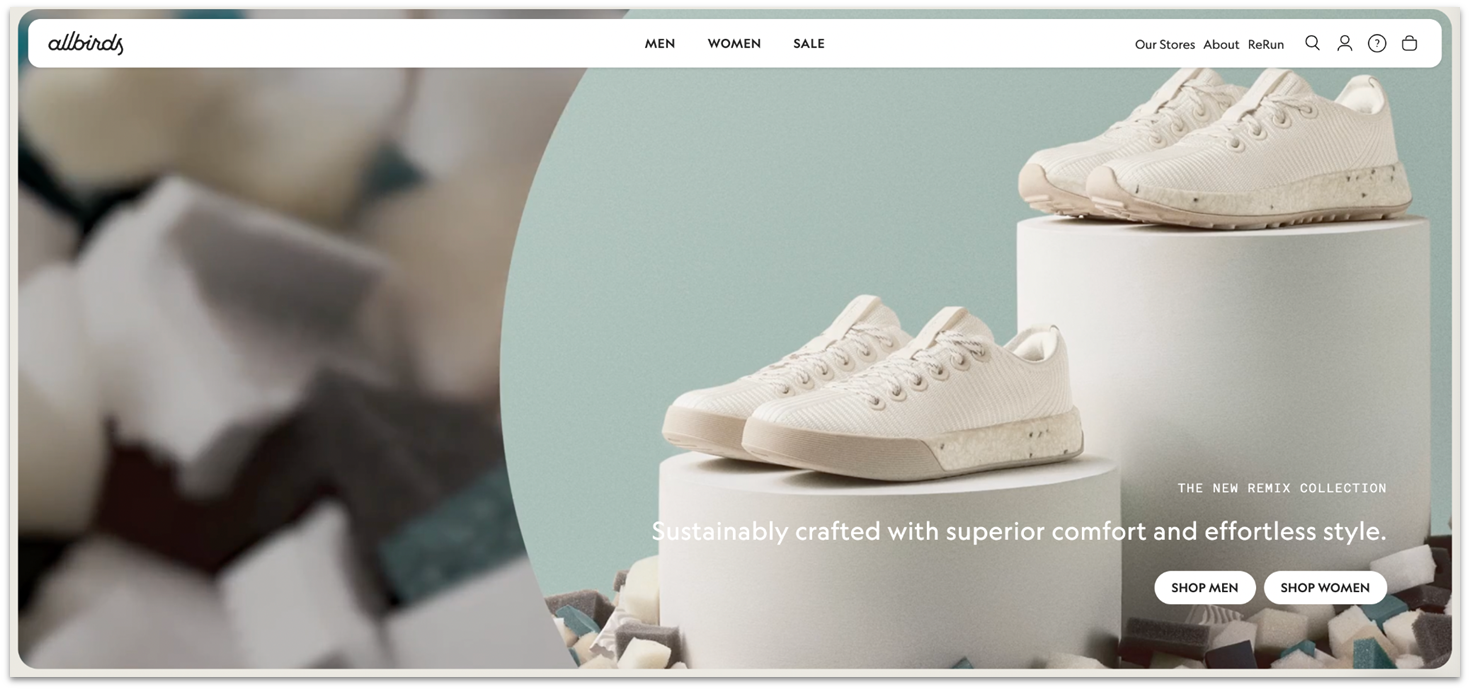
Visit the website at: https://www.allbirds.com/
Large hero images, clean typography, and whitespace give Allbirds a modern look that matches its eco-friendly mission. Navigation is simple and intuitive, with clear calls-to-action like “Shop Men” and “Shop Women” that guide visitors directly to product categories. This helps reduce decision fatigue and makes it easy to move from browsing to purchasing, even on mobile.
Another strong feature is Allbirds’ dedicated pages for the brand’s physical store locations and its online thrift shop, where it sells “slightly imperfect and gently used” shoes. With Shopify, you can set up multiple store experiences under one roof, which is a smart way to highlight different revenue streams while keeping your site uncluttered.
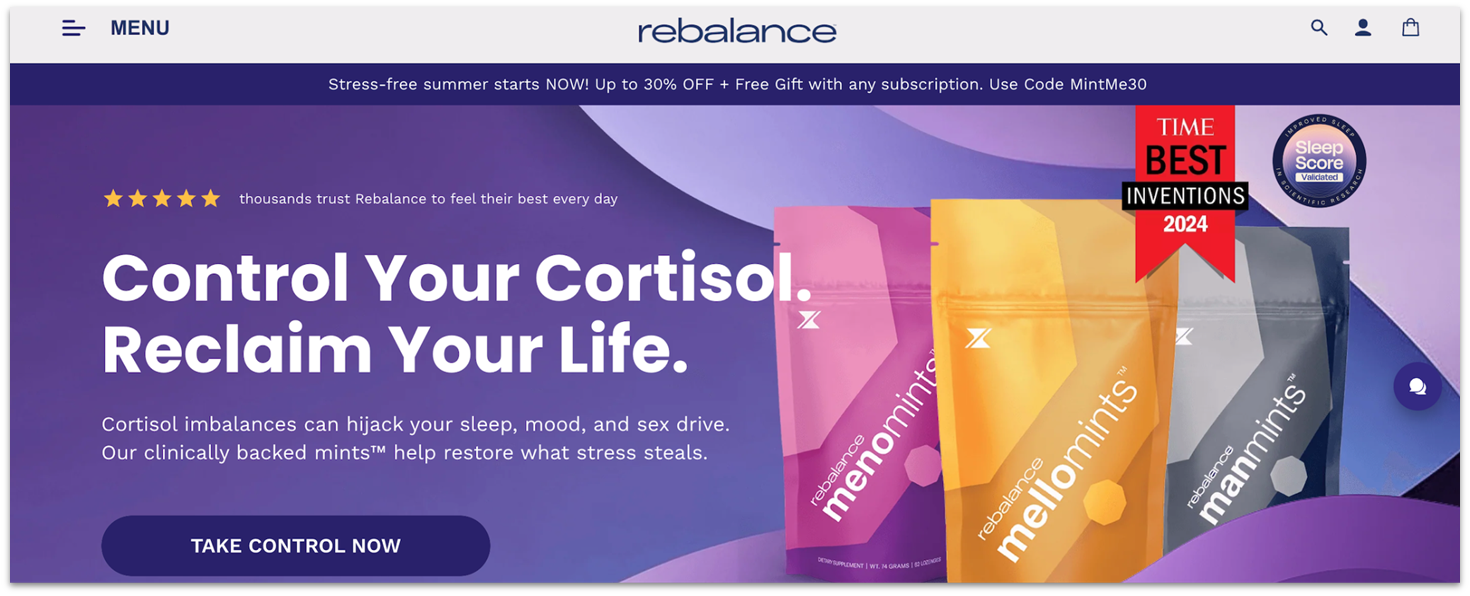
Visit the website at: https://rebalancehealth.com/
Rebalance Health features press badges from outlets like Time magazine, research validation badges, and product reviews. You also see UGC and customer testimonials, which reinforces confidence in the brand. The design keeps these trust signals front and center, reminding visitors at every step that the products are backed by both science and social proof.
Dedicated pages explain the science, formulation process, and ingredients of Rebalance’s products in detail, which can help reduce hesitation before purchase. The Blog and Press pages expand on this by giving educational content and highlighting collaborations with experts and athletes. Clear explanations, educational resources, and trust elements can work together to inform and reassure potential customers.
Other Notable Shopify Website Examples
11. Kylie Cosmetics
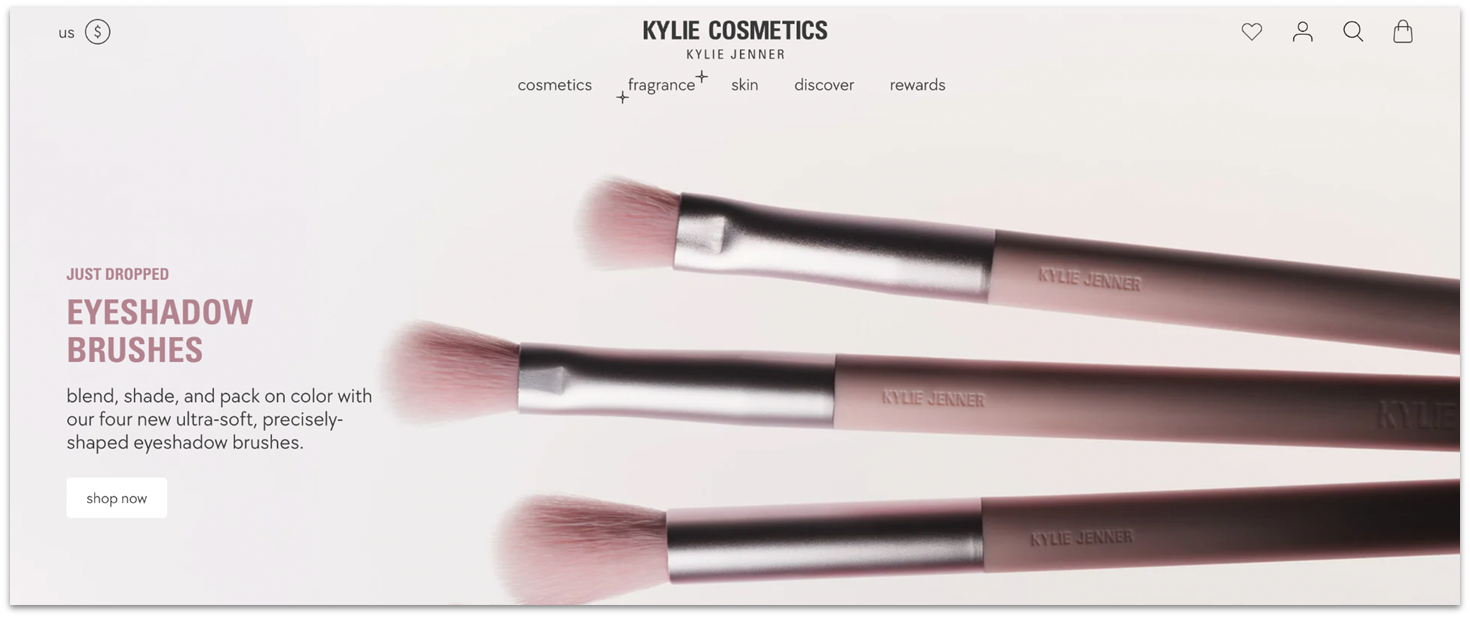
Visit the website at: https://kyliecosmetics.com/
Kylie Cosmetics includes a “Virtual Try-On” feature for lipsticks and blushes, helping visitors make confident purchasing decisions. Kylie Cosmetics is one of the best Shopify Plus examples for larger e-commerce brands. It presents its products with clear pricing, ratings, and simplified add-to-cart functionality, reducing friction during checkout.
12. Alo Yoga
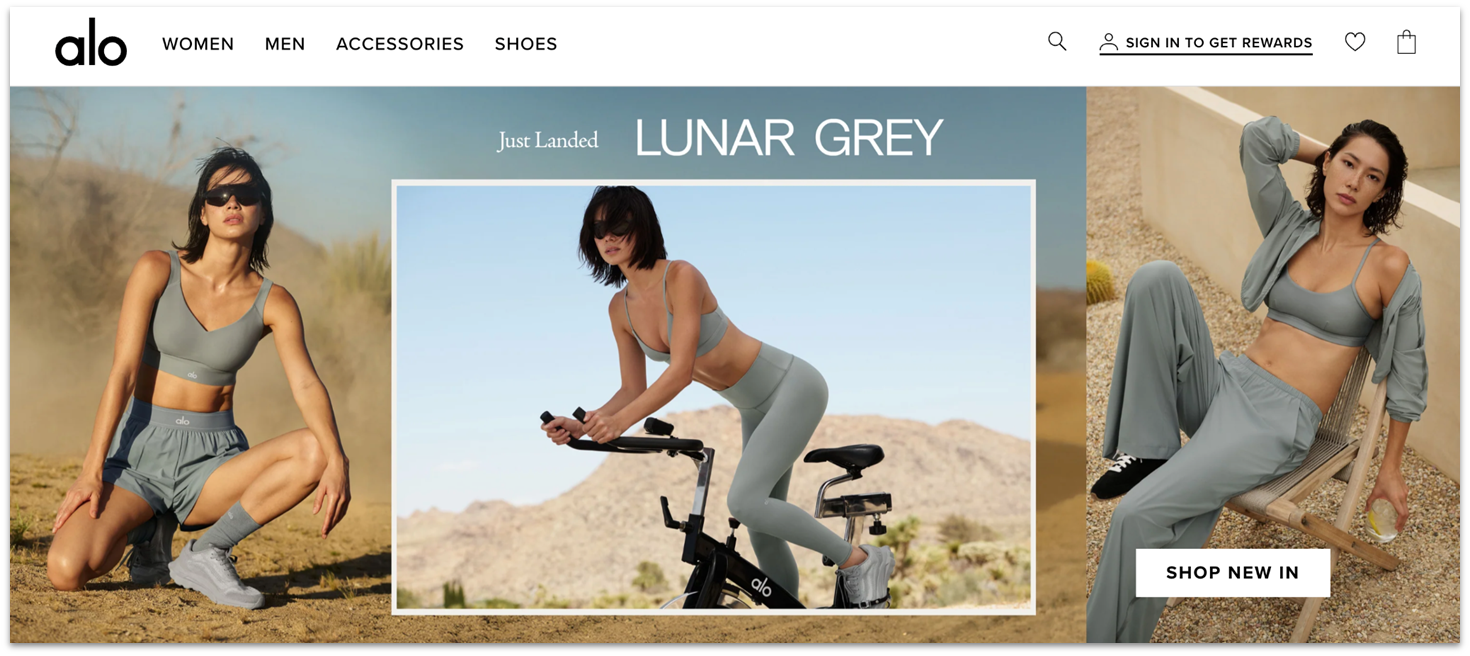
Visit the website at: https://www.aloyoga.com/
Alo Yoga features “Shop by Activity” and “Shop by Color” sections that let shoppers quickly find products that match their lifestyle or aesthetic. Customer reviews with photos add social proof, while the AI assistant gives support for common questions.
Tips and Takeaways From the Best Shopify Store Examples
These examples reveal exactly what works on a high-performing Shopify site. Use the tactics below to create a shopping experience that turns visitors into buyers.
- Organize products by need. See how Loop Earplugs splits items into Sleep, Focus, and Noise Sensitivity so shoppers find what they need fast.
- Show products in action. Tattly uses playful lifestyle photography that makes its tattoos feel personal and inspiring.
- Highlight your mission. Meow Meow Tweet builds trust with a clear “Who We Are” page that shares its ethical values.
- Reduce buying hesitation. Bombas shows multiple angles, color choices, and sizing options to make decisions easier.
- Tell your story with video. See how Houseplant includes behind-the-scenes clips of Seth Rogen’s design process for an authentic touch.
- Integrate social media content. See how Rhode Skin embeds Instagram posts to keep its store dynamic and community-driven.
- Guide visitors with clear CTAs. Bokksu’s homepage uses bold subscription buttons that point shoppers to the next step.
- Connect products to lifestyle. Blak Bear pairs its surf gear with full-width hero images that create an emotional hook.
- Keep design clean and focused. Allbirds uses whitespace and simple navigation to move visitors from browsing to buying.
- Build trust with proof points. Rebalance Health places research badges, testimonials, and reviews front and center.
Build a Shopify Store That Stands Out
If you’re serious about selling online, Shopify is one of the best platforms to build and grow your store. It’s designed specifically for e-commerce, making it a great choice whether you’re just starting out or scaling to thousands of products. Shopify’s features include:
- Scalable product management. Shopify handles everything from small, curated catalogs to massive inventories with ease.
- Global reach. You get built-in multi-currency and multi-language options to help you sell worldwide.
- Seamless payments. Shopify Payments plus dozens of third-party gateways ensure flexibility for both you and your customers.
- App ecosystem. With 8,000+ integrations, you can extend your store’s functionality for marketing, shipping, and accounting.
- Omnichannel selling. In addition to your website, Shopify lets you sell also across social media, marketplaces, and in-person with Shopify POS.
FAQ
What are some good Shopify website examples?
Loop Earplugs is a good Shopify website example. It uses a calm layout, clear product categories, and a guided quiz to help shoppers quickly find the right product. Bombas is another good one, which highlights its products in action, organizes shopping by category, and uses free shipping banners and sticky discount buttons to make buying simple.
What is the most successful store on Shopify?
Allbirds is one of the most successful stores on Shopify, scaling rapidly into a billion-dollar sustainable footwear brand. Kylie Cosmetics is another successful Shopify store that has generated hundreds of millions in revenue.
What is the most successful niche on Shopify?
Some of the most successful niches on Shopify include beauty & skincare, health & wellness, fashion & clothing, and pet products.
How much does Shopify take from a $100 sale?
It depends on your subscription plan and payment method. With Shopify Payments, fees typically range from $2.80 to $3.20. If you use a third-party credit card processor, Shopify adds an extra 0.6%–2% on top of standard processing costs. However, the total cost may still be lower, since many third-party payment providers offer lower base rates than Shopify.
How long does it take to build a successful Shopify store?
It typically takes you between a few hours and a couple of days to build a professional Shopify store. More complex, fully customized stores with advanced features and large inventories can take 4 to 8 weeks or longer depending on your needs. If you need help getting started, you can check out our comprehensive guide to building a Shopify online store.






